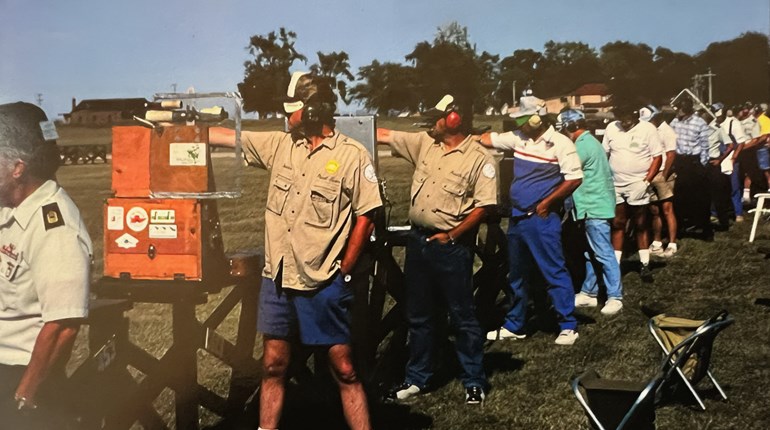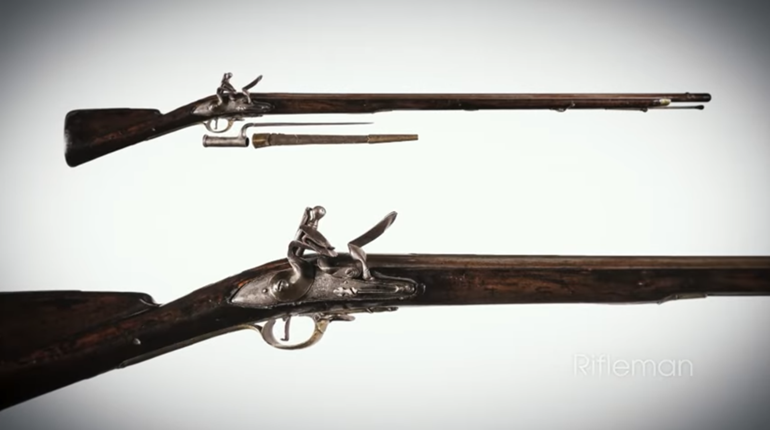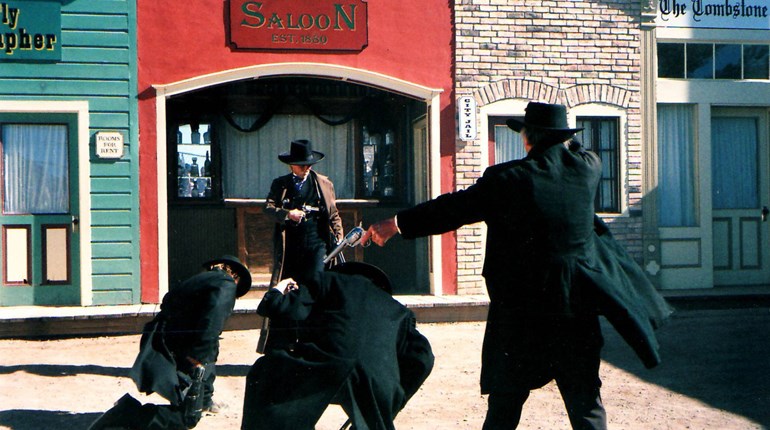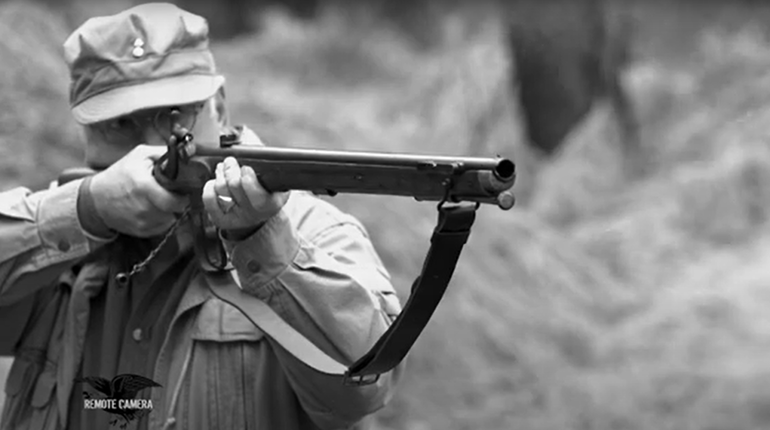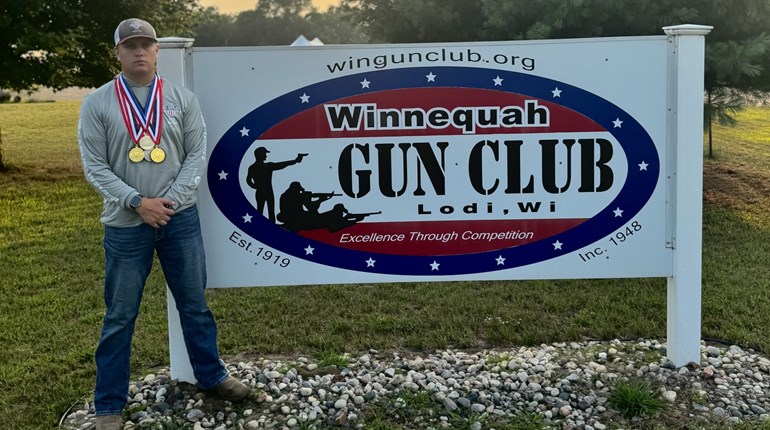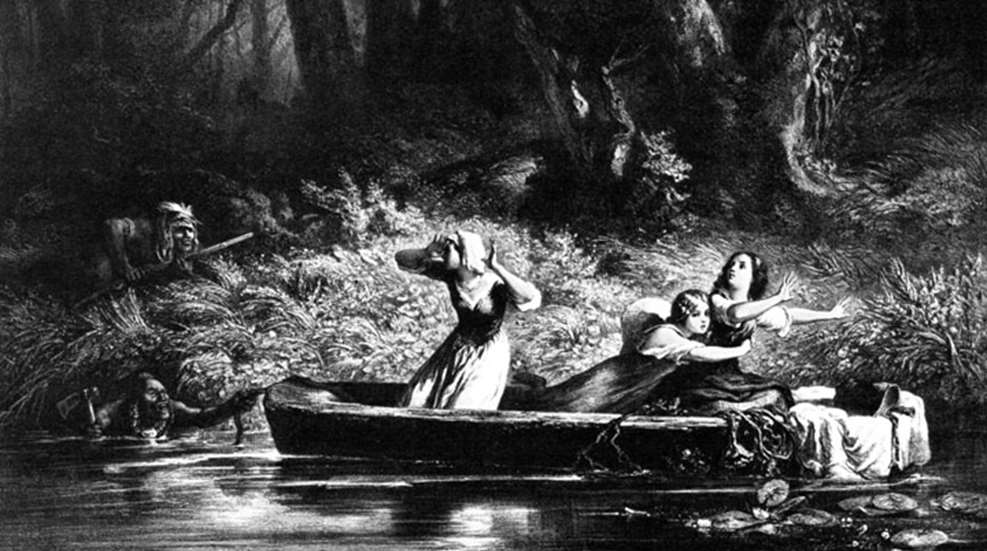
During the 1700s, the Native American Indian tribes encircling the land that one day would become the state of Kentucky made it a distinct point not to live there. The tribes had entered into a pact—a gentlemen’s agreement of sorts—to only hunt and trap in this region and not allow any permanent villages or any warfare. Even members of tribes that had been mortal enemies for centuries sometimes camped within sight of one another, yet obeyed the agreement.
The reason for this arrangement was that Can-tuc-kee, as the Shawnees called this vast, sacred land, was just too valuable a hunting ground. Bounded by the Big Sandy River to the east, Ohio River to the north, Mississippi River to the West, and Cumberland River to the South, it was the home of myriads of large game animals. Whitetail deer, elk and buffalo roamed the virgin forests by the tens of thousands; and prime furbearers, such as beaver and otter, were nearly as numerous. Indian hunting and trapping parties might spend weeks or even months on this Middle Ground, but always eventually returned home.
It is no wonder that when white men from beyond the Allegheny Mountains to the east--led by Daniel Boone--arrived and began felling trees to build a fort, that the Indians were immediately incensed. Who were these interlopers, and why had they not first asked permission to enter Indian lands?
As for Boone, he and a party of five other frontiersmen had been caught by Shawnees while hunting in Kentucky previously and warned sternly not to return. “Now, brothers, go home and stay there. Do not come here anymore,” said Captain Will, a subchief. “This is the Indians’ hunting grounds, where we must provide for our families over the winter. All the animals, skins and furs were given as a gift by Moneto for our support. Without which we could not survive. You must go. Consider us to be the stinging bugs who guard their nests; if you are so foolish as to come here again, you may be sure the wasps and yellow jackets will sting you severely.”
But the call of this spectacular wilderness was just too much for Boone to resist. Not only did he return to this hunting paradise, but brought his family and other families with him, and together they built Fort Boonesboro. A line in the sand had been drawn. The war for control of Kentucky had begun.
Sunday, July 14, 1776, had begun much like most other Sabbaths at Boonesboro. The inhabitants were enjoying a quiet weekly break from their labors, with Daniel Boone taking a relaxing afternoon nap in a cabin within the fort. Jemima, his 14-year-old second daughter, had asked if she could go for a canoe ride with her two teenage friends, the sisters Betsy and Fanny Callaway (ages 16 and 14 respectively), on the Kentucky River that flowed adjacent to the fort.
Boone had reluctantly consented, but warned the girls not to get too close to the north shore of the river. “There might be Injuns about…” Boone said.
“Yes, Daddy,” Jemima sighed, no doubt rolling her eyes. Her father, it seemed, was always worried about Indians.
The girls were not exactly accomplished paddlers, and the wooden dugout canoe was heavy and hard to handle. Before long, they found themselves caught by the current and being pulled toward the river’s north shore. As Boone had predicted, once the girls were within a few feet of the bank, five Indian warriors with rifles—three Shawnees and two Cherokees—stepped out from behind cover, one wading into the water up to his waist and grabbing the rawhide tug attached to the bow of the boat.
The three girls immediately began screaming as the two Callaway sisters, seated closer to the front of the canoe, beat the Indian holding the tug about his head and shoulders with their paddles. But to no avail. The braves quickly dragged the girls from the boat then shoved it back into the river, dashing any hopes the girls may have had of escaping back to the fort.
Daniel Boone heard the girls’ screams, jumped from bed, grabbed his muzzleloader and ran toward the river barefoot, not even thinking to pull on his moccasins. When he and the others arrived at the riverbank and peered across, the girls were already gone. Pushed into the woods by the warriors, they were now captives and being hurried along the dark, woodland trail in the direction of the Indian towns north of the Ohio—to what ultimate fate no one knew, or any parent even wanted to imagine.
Boone immediately organized a rescue party of half a dozen or so men, but by the time they recovered the canoe and crossed the river in it the Indians already had a significant head start. Yet the experienced frontiersmen tirelessly gave chase, covering nearly 50 miles in less than two days. It was finally on Tuesday morning that the Indians stopped long enough to kindle a small cooking fire, believing they were now safe from pursuit.
The girls had done what they could to mark their trail and make their rescuers’ job easier. Occasionally bending or snapping off the tips of brush and small tree limbs as they passed, they had also discreetly dropped small pieces of cloth along the trail, torn from their dresses. In addition, when walking over soft ground, they twisted their feet to make the deepest impressions possible.
Silently approaching near the Indians’ camp, Boone gathered his men and instructed them not to fire their weapons until he fired his first. Any mistake in shooting too soon, he explained, would allow the Indians time to tomahawk the girls before they could be rescued. But one man did fire his rifle before Boone, later explaining that he believed the Indians had seen him. Regardless, when that first gun went off the fight for the lives of the captives was now engaged.
Boone quickly threw his rifle to his shoulder, fired and killed one Indian; another of the frontiersmen shot and killed a second. Upon hearing the shots from the surrounding woods, Jemima Boone’s prayers of the past three days had been answered. “That’s Daddy!” she screamed. The rescuers then rushed the camp with a loud yell, the surprise so complete that the Indians ran off leaving behind nearly all their belongings: rifles, ammunition, tomahawks, knives--and some, like Boone, left without their moccasins.
But two disasters were yet to be averted. One warrior threw his tomahawk at Betsy Callaway as he disappeared into the woods, just missing her head. She barely avoided death yet again only a few seconds later when one of frontiersmen mistook her for an Indian. Betsy had tied a red bandana about her head and the Indians had cut off her dress at the knees to make it easier for her to walk faster through the woods.
Swinging his now unloaded rifle by the barrel and caught up in the heat of battle, the frontiersman was about to club Betsy with it when Boone grabbed him just in time. “For God’s sake,” he yelled, “don’t kill her when we have travelled so far to save her from death!” The man, upon realizing his nearly fatal mistake, broke down and wept like a child.
If all this sounds like it would make good grist for a novel or movie, well…it did. In 1826, 50 years after this incident, James Fenimore Cooper used it as inspiration for his most famous novel, The Last of the Mohicans. Then, more than a century and a half later (1992), the novel was made into an award-winning movie of the same name, starring Daniel Day-Lewis and Madeleine Stowe.













